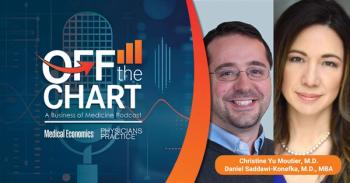
Why tax planning matters for your retirement
Without the proper tax planning strategies in place, a physician could face some costly and unwanted surprises.
Despite recent pressures on physician profit margins, a physician’s income remains relatively high compared with that of the general public, propelling many into the onerous top tax brackets both before and during retirement. Without the proper tax planning strategies in place, a physician could face some costly and unwanted surprises.
So, what do physicians need to know about mitigating taxes and preparing for retirement?
Understanding How Much of Your Income Will Be Taxed and When
In 2020, a physician filing a joint tax return with taxable income exceeding $414,701 is taxed at the 35% federal tax bracket, which goes to 37% if taxable income exceeds $622,051. The physician would also be subject to Social Security, Medicare and state income taxes, as well.
For most working physicians, the majority of their income will come from their paycheck or practice revenue. In retirement, though, physicians will likely rely on multiple different sources to generate income including investment income, IRAs, social security, and possibly even pension plans. Each type of income incurs different tax liabilities and will affect your “take-home” amount in different ways.
For example, contributions made to traditional retirement plans with pre-tax dollars during your working years will be taxed upon withdrawal in retirement as ordinary income, but Roth IRA contributions made with post-tax dollars will not be taxed when withdrawn. A portion of your social security benefit is taxed based on your overall income (from 0-85% of the benefit), which means physicians’ benefits will likely be heavily taxed.
Understanding how your retirement income will be generated will give you an overall plan for how to withdraw the funds with the least amount of tax liability chipping away at your resources. It will also allow you and your financial advisor to plan ahead—working to avoid becoming “tax deferred” rich and owing a huge chunk of change each year in retirement when you have less control over your income. Does it make sense to contribute to a Roth retirement account rather than a traditional deductible retirement account while you are working? Does a Roth conversion make sense either while you are working or in retirement? These are questions your financial advisor can help you with in the years moving up to and through retirement.
Capital Gains and Tax-loss Harvesting
When selling a security, the tax rate on the gain in a taxable account is determined by the length of time you have owned the security. Since selling securities may be part of your draw-down plan for generating retirement income, you’ll need to know at which rate your securities will be taxed. Long-term capital gains are taxed up to 15-20% depending on income, and short-term capital gains are taxed as ordinary income, which could be as high as 37% depending on your marginal tax bracket. A security qualifies for long-term gains when it has been held for over a year.
In some circumstances, it may be advisable to take tax losses to offset capital gains elsewhere. This is known as “tax loss harvesting” and involves the selling of certain investments that show a loss in order to offset the high capital gains rates on other securities being sold or taxed that year. Be aware of the “wash sale rule,” though, which prohibits individuals from claiming a loss if the same or substantially similar security is purchased within 30 days of the sale.
Maximizing Retirement Contributions Before and During Retirement
Other tax-minimizing strategies are related to the practice retirement plan, and thanks to provisions of the 2019 SECURE Act, can now be implemented both in the accumulation and decumulation phases so long as the physician is earning wages from non-investment income.
Physicians should maximize their annual contributions to their retirement plans in order to:
- adequately prepare for retirement;
- variegate their retirement income between tax-free, tax-deferred, and tax-advantaged accounts;
- and lower their taxable income during their working years.
In 2020, physicians under 50 can contribute $19,500 each year to their 401k accounts while physicians over 50 can put aside that same amount plus an additional $6,500 each year, which makes them able to contribute a total of $26,000 to a 401k annually. Pairing a 401k with a profit-sharing plan can further increase the annual contribution to $57,000 for those under 50 and $63,500 for those over 50.
Any amount that is contributed to a 401k is made with pre-tax dollars, meaning the contributed funds will not be taxed until retirement, lowering a physician’s annual income in the year the contribution is made.
In previous years, physicians could only continue contributing to their IRAs until age 70 ½ when they were forced to begin taking Required Minimum Contributions (RMDs). However, the 2019 SECURE Act both extended the RMD age to 72 and eliminated the curtail on making contributions…with one caveat—the physician can only continue to make contributions past this date if he or she shows earned income not generated from investment accounts. This change will especially benefit those individuals who continue to work past age 72 in some fashion and allow a tax deduction for contributed funds.
About the Author
Julianne F. Andrews , MBA, CFP®, AIF® began her career in financial planning in 1988 and co-founded Atlanta Financial Associates in 1992, merging into Mercer Advisors in 2020. She specializes in working with physicians and executives in the healthcare industry. Her passion for working with physicians comes from being a pediatrician’s spouse for more than three decades. Julie has been featured on Forbes’ list of America’s Top Women Wealth Advisors since 2017 as well as Forbes’ Best-in-State Wealth Advisors since 2018. Julie can be reached at jandrews@merceradvisors.com .
Newsletter
Optimize your practice with the Physicians Practice newsletter, offering management pearls, leadership tips, and business strategies tailored for practice administrators and physicians of any specialty.









